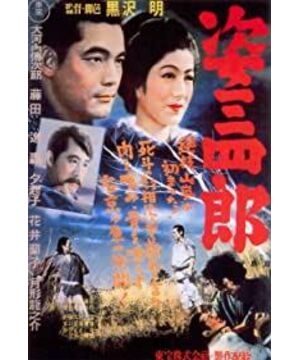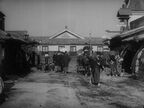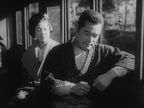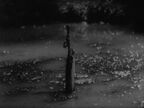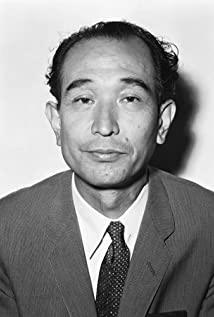6.5
one
The fight is real, but not without rhythm. Most of the battles at the beginning of the film are long-term perspectives. During the battle, the environment is larger than the people. The switch from long to medium shots to close-ups is never when it's moving, but when it's frozen, infusing the judo fighting philosophy into the movement and time and space of the image. The films of Johnnie To's "Judo Dragon and Tiger List" inherit not only the spirit of judo, but also the concept of video. With static depiction, there will be more in Western action movies, because firearms are long-distance action, and it is more difficult to describe Eastern martial arts as static paintings, and it is more difficult to give beauty, even if the beauty is not very prominent in this film, but this is always the case. This is the reason why Akira Kurosawa's video style is easily copied by Hollywood Westerns.
two
Shoes in the Rain is a rational montage, rhetorically an analogy. The usual choice is to just take one shot, stop with the shoe in the rain, and end it, but then we're not sure if it's trying to make him lonely, desolate, hard, empty, regretful, or something else. So the film has to add other shots, set up a camera group, wind blowing, sun exposure, street corners, walls, and thus create a conflict of multiple shots to form a clearer meaning, and the best thing is that this shoe is floating At the scene where Zisanshiro caused trouble, the transition design is also more meaningful than the direct cross-dissolution.
three
In Nanbei Chan, there is gradual enlightenment and epiphany. Shenxiu's verses are more reasonable, while those about Huineng are considered nonsense by everyone. Further, gradual enlightenment often lies in external constraints, while epiphany comes from within, even by chance. Yano Bengoro's hard-hearted restraint did not have a big effect, but Zisanshiro saw the lotus and had an epiphany. It cannot be said that it has nothing to do with the old monk. The old monk made him look at the moon for a night with a light taunt, but this unintentional remark really allowed him to see the lotus blooming, which confirmed the extent to which chance can manipulate what is thought to be the only way to go.
If I suggested that the blooming of the lotus was not enough to make Zisanshiro transform so much, the practitioner might retort, "You have never seen the lotus bloom under the moon!" If I say that even if there is such a method of practice, I will not rule out the possibility of being lazy in the main creation of the play, because before and after, the film has served the audience, and here you can't ask most of the audience to rely on their own experience. Open to understand the video. This may also be refuted by practitioners in the art world, "You can't ask art to serve the public, and you can't say that something doesn't exist because you can't see it"!
In any case, I may experience the moment when the lotus blooms under the moon, after forgetting this spirit.
Four
The first encounter at the shrine is one of the few times where I don’t feel so boring. The stable scene, the small movements, the moving still life paintings, especially the oil-paper umbrella that suddenly made us look like Ozu Yasujiro "pillow shot", I almost thought there would be talking to the mirror, but unfortunately it was cut too much and too fast, so that the audience could not continue to immerse in it. In addition, to tell the truth, this love crisis is too easy to solve.
five
Even if the way of rendering the decisive battle is different, it is still not interesting, no matter the person or the action, even if the middle is down in the middle, it is a routine, only the weather and geography are different, the atmosphere created by the vision is reminiscent of "Assassin Nie Yinniang". How important timing and framing are.
View more about Sanshiro Sugata reviews


